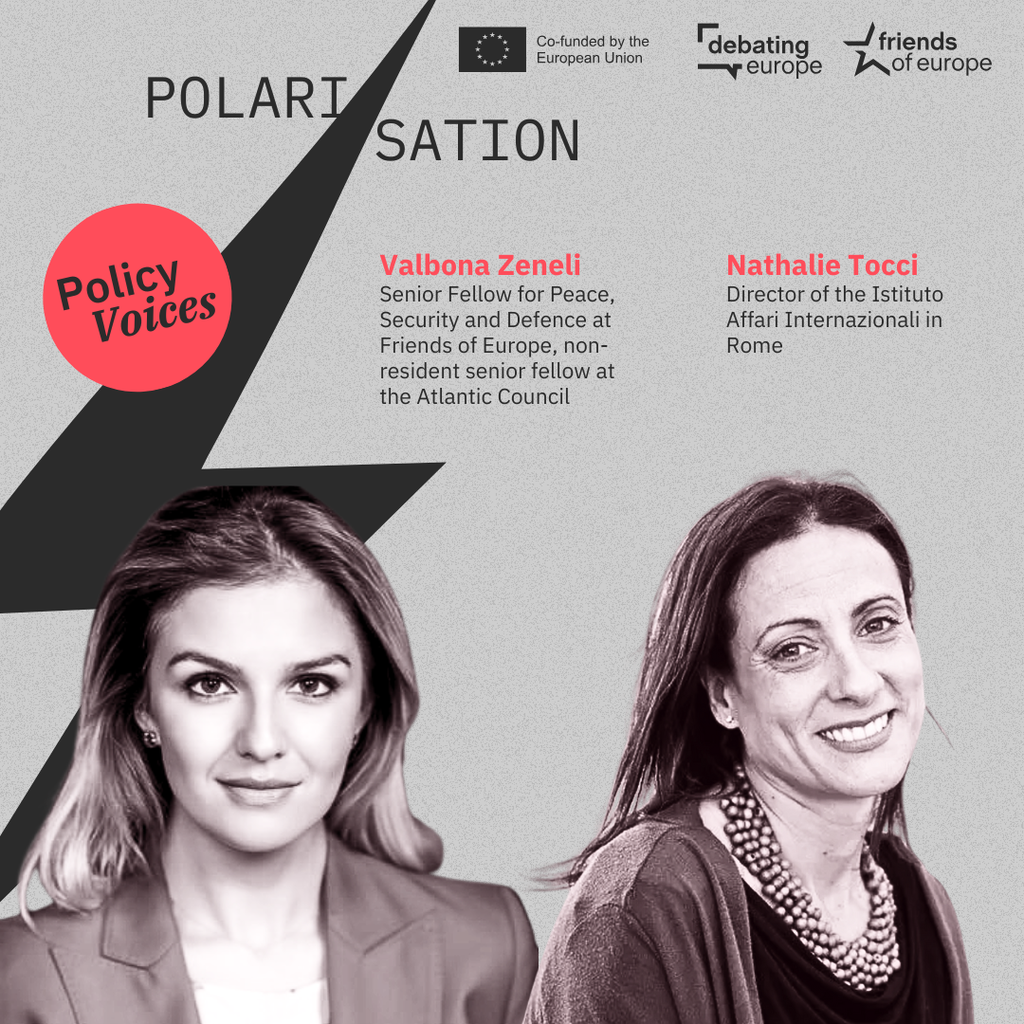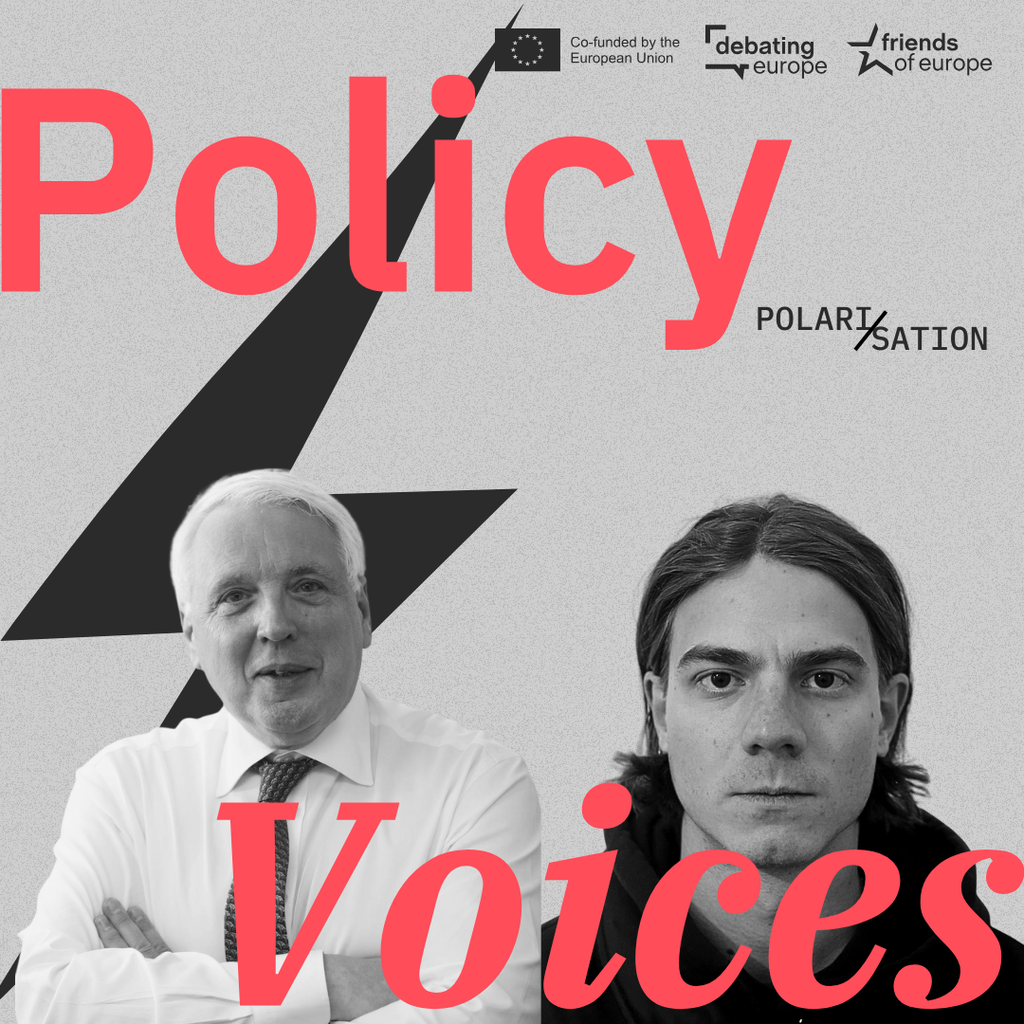From ambition to action: building Europe’s Defence Union
Past event In person

- Area of Expertise
- Peace, Security & Defence
Peace, Security & Defence

Senior Advisor at Defend Democracy, Lecturer at the Institute for Security Governance and former Senior Fellow at Friends of Europe.
Today our world is already witnessing rapid changes as the pandemic has accelerated the transition to a more digital society, while the impacts of climate change are arriving in the form of more severe floods, droughts, fires and storms. Our societies are being tested by divisive disinformation, increased frustration due to social stagnation and dealing with systemic shocks, as governments and institutions struggle to keep pace with the increasing speed of change.
Numerous predictions about our future world in 2030 indicate many new and pervasive technologies that will impact our world much like the Industrial Revolution of the 19th century, electrification in the 20th century and the information age at the beginning of the 21st century.
In the midst of these current and projected changes, how can the European Union ensure that democracy, justice and prosperity not only survive but thrive in this new era?
New developments like artificial intelligence (AI) and robots look to speed up and automate various processes, increasing productivity while making millions of workers redundant. Many experts also predict that we may outsource more and more of our routine decisions to AI. AI also creates strong temptations for governments to use it to for social control, making authoritarian approaches cheaper and easier to adopt. Both of these dynamics bring with them a multitude of questions about what they mean for democracy and privacy.
Augmented reality (AR) and virtual reality (VR) are also expected to make great strides between 2021 and 2030, ushering in a chance to advance humanity’s ability to learn, travel and build empathy for others – all in ways that can dramatically reduce our carbon footprint. They could also enable our ageing populations to remain productive and engaged sources of innovation.
For the first time, ‘reality’ may not be a single objectively verifiable perspective
But this transition from our current interactive relationship with the digital world into an immersive one is also not without its perils. The same AR and VR tools which enable these more immersive experiences can collect much more precise microtargeting information on citizens, while also serving as a more potent delivery method for disinformation.
Another related development is the emergence of AI-driven bots as a disinformation tool. When used at scale, these will be able to engage in ‘reality jamming’ – targeting populations on a mass scale to shape behaviour and create social division.
Such developments, if exploited by malign actors, could potentially divide society even further into different camps based on varying degrees of belief in reality or unreality. For the first time, ‘reality’ may not be a single objectively verifiable perspective – and this development may endanger democracy and social cohesion to a degree far beyond what we see in current times.
Another emerging technology, additive manufacturing (AM) or more commonly known as 3D printing is noted for its ability to decentralise and localise manufacturing. By decentralising manufacturing, individuals and firms can choose to produce locally, thus weakening global supply chains. According to one estimate, it could reduce cross-border trade by 25% by 2060, thus reducing carbon emissions but also reducing governments’ ability to monitor and tax goods.
AM could lead to major changes in the global economic balance as nations which are currently sources of raw materials will be able to use them to manufacture their own goods instead of exporting commodities to manufacturing nations. The transformative impact on the global south could be significant and the impact on European labour markets will require a major financial effort to prevent widespread hardship during the transition. At the same time, traditional industrial centres in Europe could see their influence dispersed to other regions within the EU as the flattening effect of decentralisation takes effect.
Europe’s edge in digital goods and intellectual property can be a great source of competitive strength
Additionally, AM can lead to the proliferation of risky goods such as weapons and drones since their designs can be carried across borders and 3D printed. This will greatly hamper government efforts to control risky goods at the point of sale and at border customs checks, resulting in a further proliferation of small arms and high-risk goods unless new proactive measures are enacted.
On the global level, these developments could also have a great impact on Europe’s digital goods and intellectual property since AM relies on digital designs to drive the 3D printing of various parts and goods.
Europe’s edge in digital goods and intellectual property can be a great source of competitive strength, but only if they are protected by more advanced legal and attribution mechanisms that are fit for the new digital age. So far, blockchain technology seems a good fit, especially since the EU Intellectual Property Office is currently adopting it.
Technological advances such as artificial intelligence, robots, quantum computing and additive manufacturing will lead to a major upheaval in labour markets but all projections also point to an increased need for highly educated workers to enable Europe to remain competitive.
As we’ve seen, the very technologies we are relying on to enable our new green economy can also present risks to democracy, the rule of law and social order if they are not managed correctly.
Preserving democracy and sovereignty in an accelerating world is critical
The impacts of climate change in 2030 will present us with the dual challenge of adaptation and continued carbon reduction as millions globally are displaced by increased floods, droughts and rising waters. The accompanying loss of biodiversity is also increasing our risk for new pandemics while antimicrobial resistance remains a future concern as well.
In broader economic terms, Europe and North America may no longer be the global economic centre of gravity by 2030 as the Atlantic economic engine is eclipsed by fast-growing economies of the Indo-Pacific region. The Indian Ocean is predicted to be the new epicentre of global economic growth as India and Africa are projected to experience high economic growth while China’s lead in manufacturing is expected to remain strong. How Europe and its key partners adapt to this new reality to remain competitive will require new kinds of partnerships with several new partners in the global south.
Preserving democracy and sovereignty in an accelerating world is critical. The pace of social and technological change is currently advancing faster than democratic institutions are able to keep pace with, leaving them playing catch-up as they react to constantly changing dynamics. The increased speed of events multiplies the chances of leaders making bad decisions as they face less predictable patterns of escalation.
They also find themselves with less time to respond, conduct thorough attribution of hybrid threats and recover from systemic shocks such as pandemics and antimicrobial resistance. And now with the advent of AI, we risk outsourcing decisions to AI systems that may move too fast for human intervention to intervene and prevent accidents.
This new dynamic of speed is forcing us to take a harder look at our decision-making mechanisms and toolboxes to ensure they are fit for purpose both now and in the future. How well the EU adapts to speed may prove to be every bit as vital as its investments in maintaining its technological edge.
1. A Europe that is pro-active, not reactive. By seeking more public awareness and debate in advance of tech developments, greater accountability can be possible once new technology arrives, especially as the twin pressures of economic competitiveness and the green transition accelerate their adoption.
The Digital Services Act, European Democracy Action Plan, legal framework for AI and General Data Protection Regulation (GDPR) are a good start, but each will require constant updates in order to remain effective. Regardless, we’ll need more stringent transparency regulation of technology companies to protect citizens and society as a whole. We must also adapt the EU workforce and society for the age of immersive technologies.
At the same time, Europe must continue to build resilience against systemic shocks such as the impact of climate change, pandemics and mass migration as they become more frequent, intense and disruptive across individual EU borders. Developing an EU community of true solidarity, collective response and support will be vital to maintaining unity both now and in 2030.
2. Define a new EU social compact that reduces economic inequality across the EU and defines the relationship between the state and the individual, achieving a balance between social welfare and individual enterprise. Digital advances can emancipate or imprison; level the economic playing field or exacerbate the socio-economic divide; enhance justice and the rule of law or lead to a more chaotic and unjust order.
A big part of this social compact will be addressing inequality since today 23.4% of Europe remains at risk of poverty, a percentage that has not changed significantly in 15 years. In light of future projected job losses as a result of new disruptive technologies, tackling inequality today remains an important aspect of a Europe that is prepared for 2030.
As current trends tell us, it is economic anxiety that fuels populism globally. Those who vote for populists are not poor but rather those who fear falling into poverty. Thus, tackling poverty and economic anxiety now are critical to producing a more resilient Europe that is ready for the many changes ahead, especially given the large influx of migrants projected both by the fall of Kabul and future climate crises.
3. Set global rules for tech regulation according to open and transparent democratic norms that respect the rights of the individual and diversity of information and opinion. The EU’s strength as a normative power is well recognised and effective in the present but may lose influence in the technology arena as the power of market access loses its sway in a world where the West is no longer the global economic centre of gravity.
In order for the EU to be able to assert its technology standards globally, it must be a leader in at least a few key technology areas such as digital goods, intellectual property or cloud computing, to name a few.
One key area where the EU can also lead on is standards for the attribution for goods manufactured by AM since this will be an important aspect not only to prevent weapons proliferation but to protect the intellectual property of the designs used to manufacture them.
4. Strengthen the EU’s research and innovation base to better compete globally while protecting the EU’s social market model. Currently the EU trails major global economic competitors in R&D funding; with Japan leading at 3.2%, USA in second with 2.79%, followed by China at 2.07% and the EU at 2.03%.
The EU’s growth in the new digital economy can only be maintained if the Union can increase R&D funding from 2% to 3% of GDP and targets it at advances which can maximise Europe’s competitive advantages. It will also require new focus on building digital infrastructure and continued technical education funding to produce a high-performing digitally literate Europe.
Being competitive in 2030 will depend on computing power, access to big data, high quality data pipelines, digital talent and partnerships. To do so, Europe will also need to further develop its risk tolerance and educate its public that frequent failures are an important aspect of technological advancement.
5. A globally engaged Europe. A main feature of the world in 2030 will be data connections and partnerships which will define everything. It will be a flatter world that is simultaneously more global and more local, multipolar and multi-nodal, with power potentially being more dispersed to city-based data and manufacturing nodes whose relationships with each other may evolve to be stronger than their connections within their own states.
Within this environment, the EU will need to be simultaneously more engaged globally and locally. In many cases, leaders of EU city-nodes may be the best positioned to engage with city-nodes abroad to build economic partnerships to promote mutual growth.
Being competitive in 2030 will also involve a new focus on access to raw materials since traditional sources in the global south may choose to use more of their own for manufacturing instead of exporting them. Traditional trade relationships with the US, Canada, the United Kingdom and others will remain vital but deeper relationships will need to be built elsewhere as well.
In order to maintain access to key raw materials, the EU will need to build new partnerships with the global south in which digital goods, intellectual property, digital talent, raw materials and finished goods can be exchanged in both directions to enable mutual growth patterns.
Meanwhile, the shift of economic importance to the Indo-Pacific region may require the EU to be a more engaged security actor in this and other regions to ensure stability for its new economic partnerships.
6. Modernise the EU toolbox. Given the accelerating pace of change both now and in the future, the EU toolbox should be updated to be more responsive while not compromising on the Union’s values. This modernised toolbox will enable the EU to defend itself, by its own means and capabilities where possible and with outside partners when necessary to address crises and threats that impact its security in the wider world.
In addition to updating the EU’s hardware, it will need to update its decision-making software to maximise the effectiveness of its full range of diplomatic and military instruments and tie them to a more united and coherent foreign policy and updated decision-making process.
One way for the EU to update its decision-making ‘software’ would be to establish a central strategic body to coordinate EU responses to security challenges: an Institutional Security Council (ISC). This body would serve the President of the European Council, the President of the European Commission and the High Representative and draw together coherent assessments, coordinate positions and responses from member states and monitor their implementation.
By taking a hard look at the future we are facing and preparing for it effectively, Europe can maintain its values, achieve strategic autonomy, deliver on the promise to its citizens and determine its own future.
“Nothing is possible without people; nothing is lasting without institutions.”
– Jean Monnet
Past event In person

Next event In person & Livestreamed

Past event Online

Past event Online





Stay informed
We use cookies and similar technologies to adjust your preferences, analyze traffic and measure the effectiveness of our campaigns. Learn more about our privacy policy.